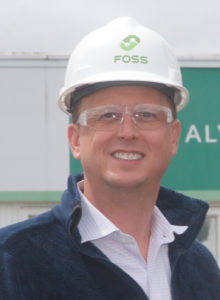Focusing on ‘Serious’ Near Misses is Key to Improving Workplace Safety
By Grant Johnson, Vice President, Health, Safety, Quality and Environment

Grant Johnson
Many of us are familiar with the traditional safety pyramid, developed by Travelers Insurance inspector Herbert Heinrich in 1931 based on his review of 75,000 injury and illness cases. His theory is that for every 330 workplace accidents, 300 will result in non-injuries, 29 will result in minor injuries and one will result in a major injury.
For many years safety professionals have focused on non-injury incidents (near-misses and/or hazard observations or NM/HOs) in order to prevent future injuries. This is because non-injury incidents, if identified and acted upon, are viewed as ‘gifts’ in that they foreshadow more serious incidents and present the opportunity to address the underlying unsafe acts or conditions causing them before they result in an injury.
Heinrich introduced his Domino Theory that same year, proposing that one undesirable event in the workplace would lead to others which would eventually lead to an accident. Much of today’s accident prevention efforts have been focused on removing the “Unsafe Act” domino in order to prevent workplace injuries.
A new report from the National Safety Council’s Campbell Institute, titled Serious Injury and Fatality Prevention: Perspectives and Practices, challenges Heinrich’s pyramid and instead proposes that not all noninjury incidents are equal in terms of their potential for resulting in a serious injury and that only some NM/HO’s have the precursors that could lead to injuries.
In order to better prevent serious injuries from occurring, it is more effective to focus on controlling these precursors rather than on trying to address all NM/HO incidents. Further, primarily focusing on Unsafe Acts, as per the Domino theory, fails to take into account that accidents usually have multiple causes andcontributing factors.
The Campbell Institute report, presented October 23, 2018, at the National Safety Council’s Congress & Expo in Houston, described the precursors to serious injuries as NM/HO’s that typically involve a combination of a higher risk activity (i.e. working at height or entering a confined space) with an amplifier (i.e. environmental conditions work interruptions, or a breakdown in communication or teamwork) that increase the severity or probability that an incident will occur.
Recognizing that not all NM/HO’s are equal and focusing on those with the highest likelihood of resulting in an injury presents the opportunity for a step change improvement in the elimination of serious injuries and life-altering events from the workplace.
I look forward to working with all of you to make this step change improvement in Foss.

